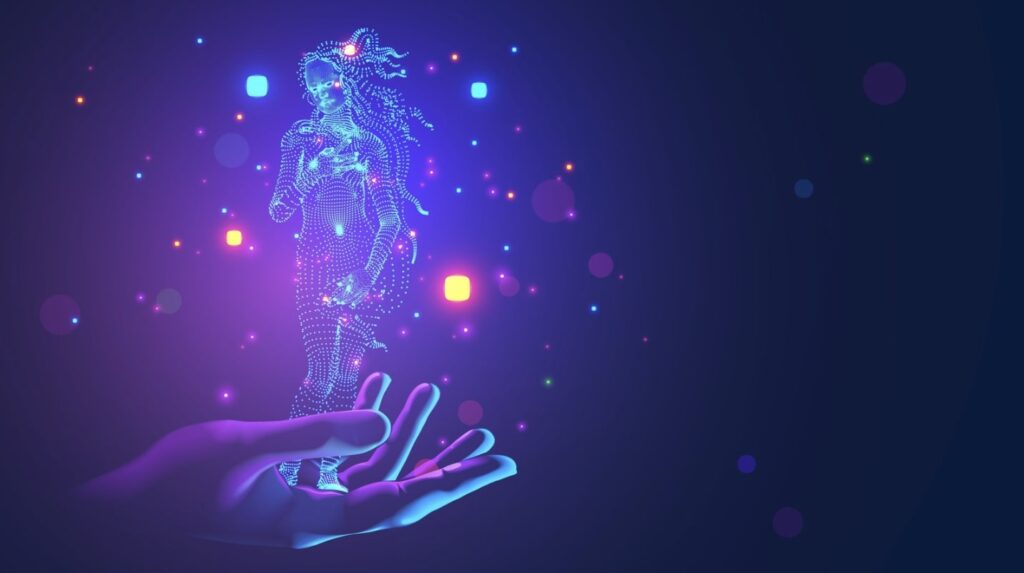Until recently, creativity depended exclusively on the ingenuity of the human brain. But of late, humans have a powerful new aid – Generative AI (GenAI.)
What GenAI deliver
GenAI has disrupted content creation like never before. Tools such as ChatGPT, Bard, Claude, and others allow any lay user to generate personalised, interactive fiction, create dream-like imagery, compose a complete symphony on the fly, annotate videos, and do much more. And GenAI is only getting started.
Here is how Gen AI push the boundaries of the creative space.
Creative content creation
Tools such as ChatGPT and Gemini shape creative content in marketing, entertainment, and other areas.
Marketers use GenAI to create conversational emails, write social media posts, generate blogs, and do more. Jasper, a marketing-focused version of GPT-3, produces SEO-optimised social media posts, emails, web copy, ads, and other content. It tests the outputs with A/B testing. All these tools deliver output in standard English, with appropriate word choices and no grammatical mistakes. It also often comes up with ideas that humans do not think about.
GenAI tools also perform complex creative tasks, from writing program code to churning out poetry.
Of late, the creative abilities of GenAI have also extended to the multimedia space. GenAI tools deliver high-quality images, including 3-D imagery. In music, GenAI tools produce adaptive compositions.
Conversational Applications
LLM models find increasing use in conversational AI or chatbots. GenAI offers deeper levels of understanding and context awareness than first-generation conversational technologies. Google’s LaMBA and Facebook’s BlenderBot, two market leaders, sustain long conversations with humans with context. Google’s BERT understands search queries.
Code Generation Applications
Another big use case for GenAI is in coding. GPT-3, in particular, generates high-quality code. When a user enters a code snippet as a prompt, GPT-3’s Codex program generates the full code in different languages. The latest versions even identify bugs, fix mistakes, and explain what specific parts of the code do.
Deloitte’s study on programming using Codex concluded that code accuracy is 65% or higher. The experiment also found productivity improvement for both novice and experienced programmers. Overall, code development speed improved by 20%.
The limitations
Notwithstanding GenAI’s scope and possibilities, it will not replace human creative workers soon.
Most GenAI-generated content has pitfalls. GenAI text suffers from emotional deficiency and an overemphasis on predictive analysis. The textual content could also use editing and refinement. Graphical content often suffers from gruesome distortions. Incorporating text and numbers into images remains unconvincing.
GenAI large language models (LLM) models are not perfect conversationalists either. They are only as good as their training data. For instance, if the training data contains racist language, the bots generate racist output.
LLM-based code generation works well for snippets. But using code generated by GenAI in a bigger program or specific tech setup requires human programming skills.
There are far bigger technical, financial, and legal challenges.
Training GenAI models requires massive data and computing power. GPT -3 training took 45 terabytes of data and 175 billion parameters or coefficients, and a single training run cost $12 million.
GenAI also raises questions of proprietary content and intellectual property rights. The created text and images are derivative of the text and images used to train the models. The “fair use” defence adopted by GenAI companies will not hold for long. Needless to say, intellectual property attorneys will remain busy in the coming years. There is also the question of the ethical angle, for which no settled solutions are in sight.
Content writers, graphic designers, programmers and music composers will remain in demand. But their nature of work will change.
The possibilities
So, how can human creative workers make the most out of their GenAI tools?
Help in getting started.
The hardest part for a creative worker is often getting started. Here, GenAI becomes a powerful tool.
Consider a writer struggling with writer’s block or a graphic designer spending hours on basic layouts. Gen AI tools such as ChatGPT provide content prompts or generate layouts in seconds. Also, the writer or the designer can experiment with several choices before shortlisting something.
In fact, 97% of marketing and creative leaders now use GenAI to eliminate such busy work. GenAI saves creative teams at least two to three hours per week.
GenAI is useful, but the creative worker remains in the driver’s seat. After the initial iteration, the creative output depends on the artists’ prompts, editing, and iteration. As a general rule, “better the prompt, better the output.”

Automating basic tasks
Creative work involves various tasks, many of which are mundane and repetitive. For instance, graphic design involves resizing and cropping images, and content writing involves adjusting character counts.
Gen AI automates such repetitive tasks and makes the first iteration faster. Also, the GenAI tools do these mundane tasks with high quality and consistency, much more than what human hands can perform.
GenAI also makes post-production work easier and more cost-effective. GenAI tools provide automated transcripts and video tagging in video content generation. It also enables predictive editing and real-time feedback. GenAI tools also synthesise and enhance voices, auto-tag, and generate metadata.
With GenAI taking care of the hard-grind stuff, creative workers get more time to focus on higher-level things. They can spend more time on ideation and innovation.
Bridging the gap between content creators and other stakeholders
There is often a disconnect between creatives and business leaders. Creatives thrive on coming up with fresh ideas and having the freedom to explore them. Restrictions and tight deadlines can stifle their creativity. They may prioritise their work’s aesthetics and emotional impact over business metrics. Also, creatives often express themselves visually. This may be at odds with the business managers’ data-driven, analytical approach.
Creative workers can use GenAI to communicate effectively with business managers. They can, for instance, convert abstract descriptions to quantifiable infographics. They can also use GenAI to explore different design variations and get feedback from business managers early in the process. An architect can use Gen AI to create 3D models based on client feedback. Such an iterative approach enables a more efficient and collaborative workflow.
Applied the right way, GenAI delivers a four- to fivefold increase in speed from idea generation to the final result. Creativists get more time to do better research, ideation, and strategy. Tools such as Adobe Creative Cloud enable such improved and faster workflows. Adobe has started integrating GenAI into creative workflows across the creative cloud apps. Adobe Firefly is now one of the most powerful AI image generation tools. Users get a creative co-pilot to accelerate ideation, exploration and production. Users can explore new ideas, improve quality, and do things faster.











